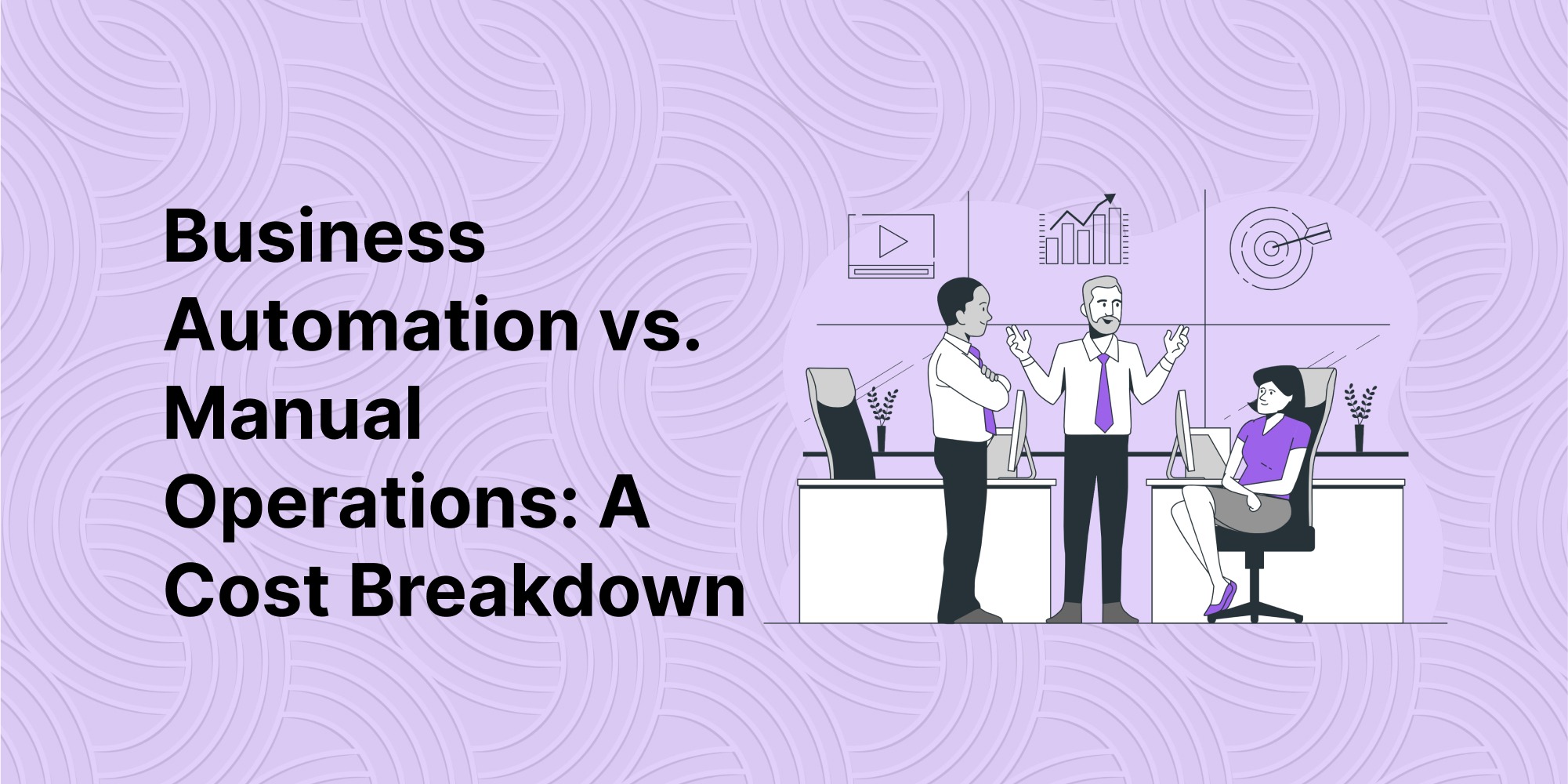In today’s rapidly evolving business landscape, efficiency, accuracy, and scalability are non-negotiable. One of the most impactful decisions business leaders face is whether to rely on manual operations or to invest in automation.
While manual operations may appear less expensive on the surface, they often come with hidden costs — from labor inefficiencies to human error. On the other hand, automation may involve upfront investment but can lead to significant long-term savings and operational improvements.
In this article, we’ll dive deep into the cost comparison between business automation and manual processes, helping you make informed decisions about where to allocate your resources in 2025 and beyond.
1. Understanding Manual Operations: The Hidden Costs
Manual operations typically involve human effort to complete tasks like data entry, order processing, report generation, and customer follow-ups. While they require little or no software investment initially, these tasks come with hidden inefficiencies.
Common Costs of Manual Operations:
- Labor Costs: Manual work demands more hours and more people.
- Human Error: Mistakes in data entry or communication lead to rework, customer dissatisfaction, or compliance issues.
- Time Delays: Routine tasks take longer, slowing down decision-making and response times.
- Training & Supervision: Employees must be regularly trained, and their work must be constantly managed.
- Scalability Issues: As business grows, more staff is needed to handle increased workload.
Example: If your employee takes 15 minutes to process one invoice manually, and you handle 1,000 invoices monthly, that’s 250 hours per month of labor — which could be reduced to a fraction through automation.
2. What Is Business Automation?
Business Process Automation (BPA) refers to the use of technology to execute recurring tasks or processes in a business where manual effort can be replaced. It applies to workflows like:
- Customer onboarding
- Email marketing
- Inventory updates
- Report generation
- Employee leave management
- Invoicing and billing
Automation can be achieved through tools like CRM systems, AI chatbots, RPA (Robotic Process Automation), workflow tools like Zapier, and customized software solutions.
3. Initial Investment: Automation vs. Manual
| Cost Factor | Manual Operations | Automation |
|---|---|---|
| Software/Tools | Low to none | Medium to High |
| Employee Salaries | High | Reduced Over Time |
| Onboarding/Training | Repeated Expense | One-Time Training |
| Infrastructure | Human-resource driven | Tech-driven |
While automation might require a larger upfront investment, it quickly pays for itself by reducing ongoing expenses.
According to a Deloitte report, companies that implement automation see an average cost reduction of 30–40% in the first year alone.
4. Time is Money: Operational Efficiency Comparison
Time saved is money earned. Automated systems work 24/7 without fatigue or error. Here’s a time comparison of typical processes:
| Task | Manual Time | Automated Time |
|---|---|---|
| Customer Data Entry | 10 min | 30 sec |
| Invoice Generation | 15 min | 1 min |
| Sending Follow-up Emails | 5 min | Instant |
| Report Compilation | 1 hour | 2 min |
Multiply that across departments and months, and the cumulative time savings are staggering.
5. Scalability and Growth
With manual operations, growth means hiring more staff, increasing office space, and managing larger teams. This not only increases costs but also slows down agility.
Automation, however, allows your systems to handle higher volumes without proportional increases in cost. Whether you’re dealing with 100 or 10,000 transactions, your software doesn’t need sleep, sick days, or training.
At NodeSure Technologies, we helped a mid-sized logistics client automate their order processing system — resulting in 3x faster order fulfillment and saving them $70,000 annually in labor costs.
6. Error Rates and Accuracy
Manual processes are prone to human error. A mis-typed email address or a miscalculated invoice can cost both money and reputation.
Average Error Rates:
- Manual data entry: 1%–5%
- Automated data entry: <0.1%
Automation ensures consistency, accuracy, and auditability, reducing costly mistakes.
7. Compliance and Reporting
Industries like finance, healthcare, and eCommerce have strict compliance requirements. Manual record-keeping can expose you to audit risks and regulatory fines.
Automated systems maintain:
- Time-stamped logs
- Secure data backups
- Compliance-ready reports
This minimizes risk and ensures you’re always regulation-ready.
8. Employee Satisfaction and Retention
Repetitive tasks can lead to employee burnout and dissatisfaction. Automation allows employees to focus on high-value, creative, and strategic work, boosting morale and retention.
Automation doesn’t replace employees; it empowers them to work smarter.
9. Real-World ROI of Automation
Let’s assume a small business processes 3,000 orders per month, manually handled by a 3-person team at $3,000/month each.
- Manual Cost: $9,000/month in salaries
- Automated System: $1,200/month (software, integrations, maintenance)
- Net Savings: $7,800/month or $93,600/year
Additionally, automated systems offer:
- Better customer experience
- Lower error rates
- Higher processing speed
10. How to Start Automating Your Business
- Audit Your Processes – Identify repetitive and time-consuming tasks.
- Start Small – Automate one department (e.g., HR, Sales, or Billing).
- Choose the Right Tools – CRM, ERP, AI Chatbots, or custom solutions.
- Work with Experts – Partner with an automation specialist like NodeSure Technologies to create a tailored roadmap.
- Train Your Team – Ensure smooth adoption and scalability.
Final Thoughts: Invest in the Future
While manual operations might seem “cheaper” upfront, they come with recurring costs, inefficiencies, and limitations. Automation, although an investment, offers exponential returns in productivity, cost savings, and business growth.
At NodeSure Technologies, we empower businesses to move beyond outdated processes and embrace automation with confidence. Whether you’re just getting started or scaling enterprise-level automation, we’re here to help you drive efficiency, profitability, and innovation.


